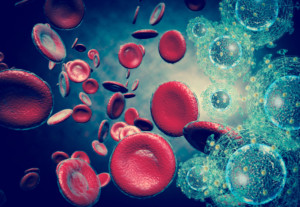
Contents
What is asparagine?
Asparagine was the first amino acid to be isolated from its natural source, which is asparagus. It is a non essential amino acid. This means the body can produce it without you needing to include it in your diet.
It is closely related to aspartic acid (also known as aspartate). Asparagine is the beta-amido derivative of aspartic acid. This term describes the structure of the amino acid.
In the process of forming asparagine, the acidic side chain carboxyl group in aspartic acid is coupled with ammonia 1. This reaction happens due to an enzyme called asparagine synthetase2:

Asparagine synthesis in the human body
Health Benefits
Building compounds
Asparagine has many uses in the body. It has a vital role in protein synthesis. Additionally, it is important in the formation of other amino acids.
Energy release
This amino acid also helps to form other chemicals that take part in the Krebs cycle (also called the citric acid cycle). This is a series of reactions in which aerobic organisms release energy.
By having more asparagine available, the Krebs cycle can take place more efficiently. Therefore taking supplements which contain this amino acid can lead to an improvement in athletic performance. This is because it takes a longer amount of time before you become fatigued, and research studies have supported this finding3, 4.
Brain and nervous system
Asparagine also helps to control the metabolic processes in the brain. It has a similar role in the nervous system, where it ensures that the system functions effectively.
Dietary sources and supplements
To supplement your natural asparagine levels, there are some foods rich in the amino acid which you can try. These include poultry, dairy, eggs, fish, meat, nuts, seafood, seeds, and potatoes5.
There are also many asparagine supplements available on the market, and these can come as part of protein powders mixed with other supplements. These are generally safe to use provided you do not have any other medical conditions and you follow the dosage specified by the manufacturer. However if you are unsure whether the supplements are safe for you, it is best to check with your doctor.
VIDEO: Guide to the Aspartate Family
Side Effects
- Abdominal cramps
- Agitation
- Anorexia
- Azotemia
- Nausea
- Vomiting
A recent study has linked this amino acid to the spread of breast cancer. However this hypothesis needs to be verified:
Sources
- Vitamin Supplements Guide. Asparagine. Internet. 2006. Available from: http://www.vitamins-supplements.org/amino-acids/asparagine.php ↩
- Asparagine. Internet. 2018. Available from: http://chemistry.tutorvista.com/biochemistry/asparagine.html ↩
- Marquezi ML, Roschel HA, Dos Santa Costa A, Sawada LA, Lancha Jr AH. Effect of aspartate and asparagine supplementation on fatigue determinants in intense exercise. International Journal of Sport Nutrition and Exercise Metabolism. Internet. 2003. 13(1):65-75. Available from: https://www.ncbi.nlm.nih.gov/pubmed/12660406 ↩
- Lancha Jr AH, Recco MB, Abdalla DSP, Curi R. Effect of aspartate, asparagine, and carnitine supplementation in the diet on metabolism of skeletal muscle during a moderate exercise. Physiology and Behaviour. Internet. 1995. 57(2):367-371. Available from: https://www.sciencedirect.com/science/article/pii/003193849400243X ↩
- Asparagine Internet. 2018. Available from: https://www.exercise.com/supplements/asparagine ↩

